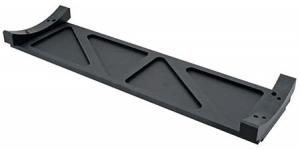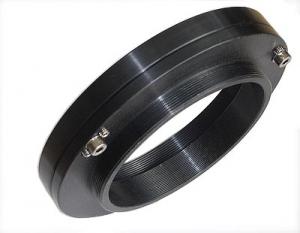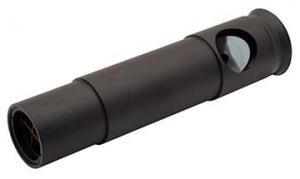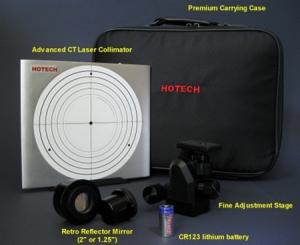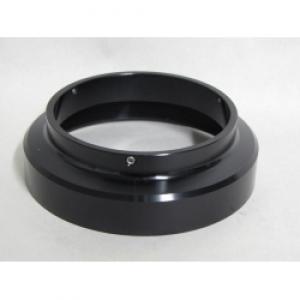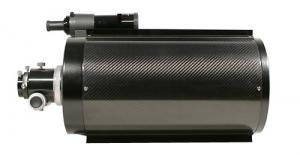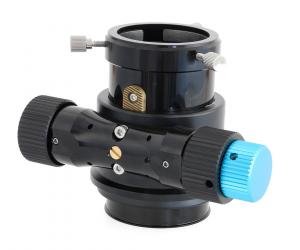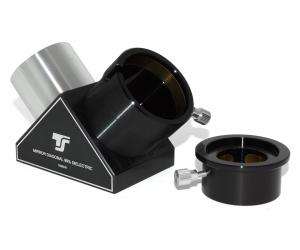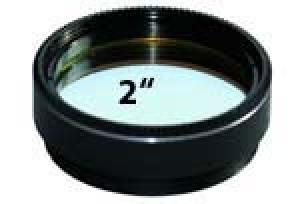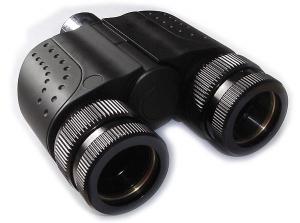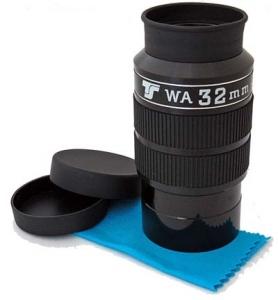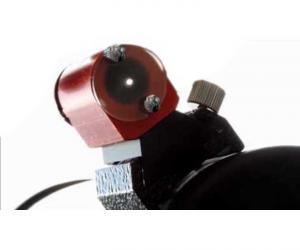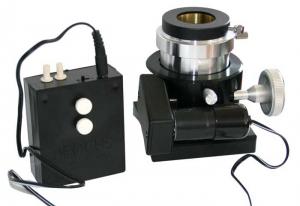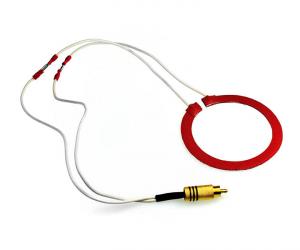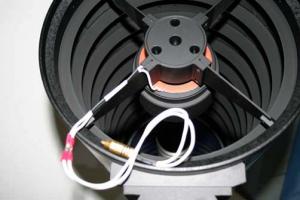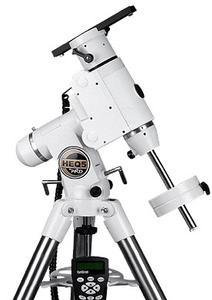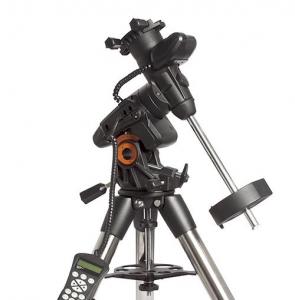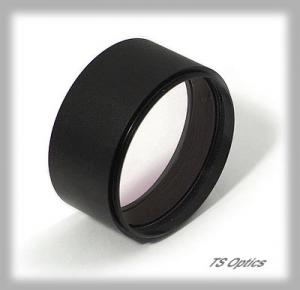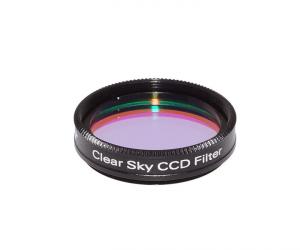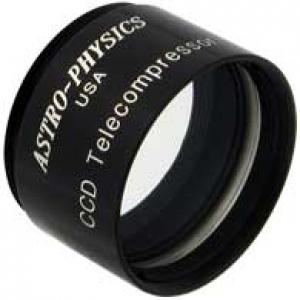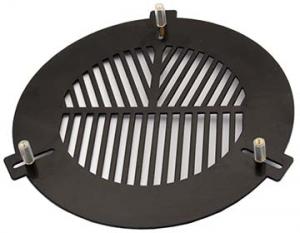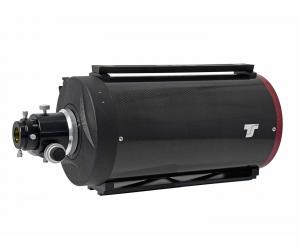- Telescopes
- Overview:
Telescopes - Achromatic Refractor
- Apochromatic Refractor
- Overview:
Apochromatic Refractor - ED Refractor - less color aberration than an achromatic
- SD APO - color free 2-element APO objective
- EDT APO - 3 element ED objective
- High End APO with 3-element APO objective - no color aberation
- Flatfield APO with flat field for Astrophotography
- All Apos and EDs from all manufacturers - large overview
- TS APO and ED from Japan with high quality optics
- Overview:
- Newtonian Telescopes
- Dobsonian Telescopes
- RC Ritchey Chretien Telescopes
- Casssegrain Telescopes
- Reflektor Telescopce with Lens Correcture
- Maksutov Cassegrain Telescopes
- GoTo Telescopes
- Solar Telescopes H-Alpha
- Overview:
- Mounts Tripods Rings Rails Power Supply ...
- Overview:
Mounts Tripods Rings Rails Power Supply ... - Mounts Equatorial with GoTo
- Mounts Equatorial without GoTo
- Mounts Azimutal with GoTo
- Mounts Azimutal without GoTo
- Mounts GoTo - Harmonic Drive
- Travel mounts for astro imaging
- Tripods Piers Polar Wedges
- Mount Control & Electronics
- Dovetail Clamps, Plates and Mount Adapters
- Tube Rings
- Power Supply
- Counterweights Balance Weights
- Mount Accessories - Other
- Overview:
- Telescope Accessories
- Overview:
Telescope Accessories - Eyepieces
- Barlows & Reducer Lenses
- Diagonal Mirrors and Prisms
- Binocular Viewers
- Finder Scopes
- Telescope Collimation and Test
- Cleaning Tools
- Transport and Storage
- Dust protection for Telescopes & Accessories
- Stray Light Protection
- Dewcaps and Heater
- Focusers, Adapters, Motorfocus
- Telescope DIY & Improvement
- Other telescope accessories
- Replacement Parts
- Overview:
- Filters
- Overview:
Filters - Color Filters and Color Filtersets
- Nebular Filters for Visual Observing
- Neutral-Density and Polfilter
- Photo Narrowband Nebular Filters
- Photo Broadband Filters
- Photo Planetary Filters
- Photo R-G-B and IR Cut Filters
- Photo - Filtersets
- Photometric Filters
- Clip Filter for DSLR Cameras
- Filter Wheels and Filterslider
- Solar Filters for white light
- Solarfilter for H-Alpha and Calcium
- Overview:
- Adaptors
- Overview:
Adaptors - Adapter 1,25" and 24,5mm
- Adapter 2"
- Adapter T2 - M42x0.75
- Adapter M48x0,75
- Adapter M54
- Adapter SC
- Adapter M63
- Adapter M68
- Adapter to other Threads
- Adapter Extensions
- Adapter camera bayonet
- Adapter Objective Filterthread
- Adapter Quick Changing , Rotation
- Adapter Eyepiece Projection
- Adapters Tilting
- Overview:
- Astrophotography and Photography
- Overview:
Astrophotography and Photography - Cooled Cameras
- Cameras without Cooling
- Deep-Sky Cameras uncooled
- Set-Offers Camera, Filter, Wheels
- Acessories for Cameras
- Travel mounts for astro imaging
- Imaging Correctors for Telescopes
- Autoguiding Cameras & Sets
- Everything for Guiding
- Focusing aids - Bahtinov mascs
- Flat Field foils and boxes
- Lenses for Cameras
- Piggyback Camera Holder
- Camera Bags, Photocases & more
- Digital Camera and Smartphone Adapter
- Other photo accessories
- Overview:
- Binoculars, Spotting Scopes, Microscopes, Range Finders
- Overview:
Binoculars, Spotting Scopes, Microscopes, Range Finders - Roof Prism Binoculars
- Binoculars with Porro prisms
- Binoculars from 100mm Aperture
- Binoculars with 1,25 inch eyepieces
- TSMX APO Binoculars
- Binoculars for Astronomy
- Binoculars Hiking Bird watching
- Monoculars - Opera Binoculars
- Accessories for Binoculars
- Spotting Scopes
- Range Finders
- Microscopy
- Bags for Phototripods & Binoculars
- Overview:
- Phototripods and Binomounts
- Books, Software
- Overview:
Books, Software - Books for Astronomy Beginners
- Star Charts and Planispheres
- Books about our Solar System
- Observing Tips for Amateurs
- Popular Astronomy Literature
- Teaching material
- Astrophotography books
- Telescopes, Observatories, Construction
- Calendars Yearbooks
- Software, Star Charts
- Books for Microscopers
- Books Nature and Animals
- Nature Photography TimeLapse
- Overview:
- Night Vision, Magnifiers, Weather, Domes & more
- Beginner Astronomy and Gift Ideas
- Second Hand & Special Offers
- New products
Manufacturer: -TS Teleskope
Product number: TSRC8M
EUR999.00new
EUR 999,00RRP EUR 1.190,00you save 16.1% (EUR 191,00)
incl. 19 % VAT (DE)
The VAT indicated refers to that applicable in Germany. After logging in, the VAT amount is adjusted to the applicable VAT of the stored delivery country. Therefore, the final price may vary accordingly.
excl. 13.95 € shipping costs (DE)
more details to the shipping costs ...Please log in to calculate shipping costs to your country.
rating: 5.0 of 5TS-Optics GSO 8" Ritchey-Chretien Pro RC Telescope 203/1624 mm OTA1
- Details..
- Technical data..
- In the box..
- Reviews..
- Download..
- Manufacturer infos..
- Safety informations..
TS-Optics GSO 8" f/8 RC Ritchey-Chrétien Telescope
Most large professional telescope are constructed according to the RC principle. Until recently, these telescopes were unaffordable for amateurs. RC telescopes from Teleskop-Service are primarily aimed to amateur astronomers with photographic interest. These telescopes are perfectly suited for high-resolution astrophotography. Of course, an RC can also be used for visual observing. Here, the large corrected field of view is noticeable, too. In total, the stars are sharper than, for example, in a Schmidt-Cassegrain.The advantages of the TS-Optics RC Telescopes at a glance:
Astrophotography with the TS-Optics 8" RC telescope:
 Better and sharper astrophotos without corrector with shorter exposure times. This is exactly what this RC telescope allows you to do with astro cameras and SLRs up to APS-C sensors. As a pure mirror system, you can even use the infrared light. You can achieve up to 25% shorter exposure times and sharper imaging than, for example, through a comparable Schmidt-Cassegrain telescope. For the use of a reflex camera without focal length reduction you need the 50mm and the 25mm extension between focuser and telescope.
Better and sharper astrophotos without corrector with shorter exposure times. This is exactly what this RC telescope allows you to do with astro cameras and SLRs up to APS-C sensors. As a pure mirror system, you can even use the infrared light. You can achieve up to 25% shorter exposure times and sharper imaging than, for example, through a comparable Schmidt-Cassegrain telescope. For the use of a reflex camera without focal length reduction you need the 50mm and the 25mm extension between focuser and telescope.The generous backfocus also allows the connection of correctors, which we recommend from the use of full-frame sensors. You can also connect a focal length reducer, thus further increasing the light intensity of the RC.
Astrophotographic results obtained with this telescope on Astrobin
The RC telescopes are very well suited for astrophotography. Here you can find some astrophotographs made with this telescope model: Link to Astrobin
0.67x CCD reducer for astrophotography
The CCD47 improves the focal ratio from f/8 to f/5.36, thus reducing the exposure time to less than 50%. With this, you can capture dim nebulae and galaxies with moderate exposure times.The 2" MONORAIL focuser - more than a Crayford:
 The Monorail focuser combines the ease of movement of a Crayford focuser with the stiffness of a rack-and-pinion focuser. Thus astrophotography becomes a success.
The Monorail focuser combines the ease of movement of a Crayford focuser with the stiffness of a rack-and-pinion focuser. Thus astrophotography becomes a success.Primary and secondary mirror of quartz glass with 94% enhanced reflectivity:
Quartz glass does not change its dimensions if temperature changes. When the temperature changes slowly during an exposure, other mirror substrates, like Pyrex, tend to a deformation of the mirror and thus to a shift of the focus. This problem does not exist for mirrors of quartz glass. Thus the focus is better maintained which is very important for long exposures. Both mirrors are coated with 94% reflectivity. The image is obviously brighter than the one of telescopes with only 90% reflection layer.
The advantages of TS RC telescopes for astrophotography:
The TS RC astrographs are true Ritchey-Chrétien telescopes. Maksutovs and Schmidt-Cassegrains have spherical mirrors and need correctors for making a large field usable. With Schmidt-Cassegrains, you can see the aberrations in the field even when working visually. Most times, Maksutov-Cassegrains are so slow that they are not suitable for astrophotography. RC telescopes have hyperbolical primary and secondary mirrors. They are more difficult to manufacture, but offer a significantly sharper field with less aberrations throughout the field.
Why is the RC Telescope superior to Schmidt-Cassegrain telescopes with correctors:
Celestron EHD or Meade ACF telescopes need a corrector. Additionally, these telescopes have a Schmidt plate at the front side which is prone to dew. The RC is a pure reflection system without lenses in the light path. Thus you can use the complete light even in the infrared range. The image is brighter and the exposure times get shorter. The field of an RC telescope is coma-free by design and relatively flat.
No shifting problem with TS RC telescopes:
Telescopes with focusing via movable primary mirror often suffer from the shifting problem. The image shifts while focusing or even jumps. By now, Meade and Celestron have the problem under control, but the effect is noticable nonetheless. TS RC telescopes do not have this problem, as their primary mirror is fixed. Focusing is done via a high-quality focuser. An additional advantage is the optimal distance from primary to secondary mirror. This gives you the guarantee of the best possible image. If the primary mirror moves relatively to the secondary, you will practically never have the optimal distance.
Adjusting the RC telescope
We recommend the TSRCKOLLI or an collimating telescope for adjusting the telescope. These tools are linked in the "Cleaning & Collimating" section.Video with information about RC telescopes
On our YouTube account you will find a video about the characteristics of the Ritchey-Chrétien telescopes in general and the features of the GSO RCs in particular, as well as suggestions for accessories:| Optical Design: | True RC with a hyperbolic primary and secondary mirror. |
| Aperture: | 203 mm / 8" |
| Focal length: | 1624 mm |
| Focal ratio: | f/8 |
| Resolution: | 0.58" |
| Reflectivity: | 94% enhanced reflectivity |
| Back focus: | 254 mm from the tube´s backside or 159 mm from the 2" receptacle of the focuser |
| Tube Diameter: | 230 mm |
| Tube Length: | 580 mm with focuser |
| Weight: | 8.25 kg with focuser, plus 500 g for extension tubes |
| Total Obstruction by Secondary: | 85 mm |
| Focuser: | 2" Monorail focuser |
| Connection Thread: | M90x1 |
| Dovetail Bars: | 2x GP style, each with 395 mm length |
Astrophotographic results obtained with this telescope on Astrobin
The RC telescopes are very well suited for astrophotography. Here you can find some astrophotographs made with this telescope model: Link to AstrobinAstrophotos through the TS 8" RC:

M92 - Reinhard I.
In the section (remark: "Recommended Accessories"), besides the flattener, two 0.67 x reducers are also offered. I would like to point out to you that your TS Photoline Reducer 0.79 x (TSRed279) also gives excellent results with the 8" RC format, giving an interesting compromise between detail and speed with a focal length of about 1300 mm.









| Manufacturer / Importeur: | Teleskop-Service Ransburg GmbH |
| Street: | Von-Myra-Str. 8 |
| ZIP / City: | 85599 Parsdorf |
| Country: | germany |
| Telefon number: | +49 89 99228750 |
| Email: | info@teleskop-service.de |
| Website: | www.teleskop-express.de |
Safety informations: PDF Download
Recommended accessories
Accessories for mounts
Adapter bar for GP dovetail bars on 3" Losmandy level
EUR 59,90RRP EUR 69,00you save 13.2% (EUR 9,10)
Adaptation Suggestion
Adaptors
TS-Optics Focal Adapter from 2 Inch to T2 (M42x0,75)
EUR 29,90RRP EUR 34,90you save 14.3% (EUR 5,00)
Alternatives to this product - Suggestions from TS
Cleaning & Collimating
Customers who bought this product also bought...
Eyepiece-side accessories like Filters
Eyepieces
Finder & Accessories
TS-Optics 8x50 Finder - straight view, black colour and with adjustable bracket
EUR 75,00RRP EUR 89,00you save 15.7% (EUR 14,00)
TS-Optics 8x50 Finder - with Bracket - black colour - 90° angled
EUR 98,00RRP EUR 109,00you save 10.1% (EUR 11,00)
General Accessories
ZWO EAF focus motor with USB-C connection for power supply and data transfer
EUR 207,00RRP EUR 257,00you save 19.5% (EUR 50,00)
Mounts
Celestron AVX GoTo Mount for Astronomy and Astrophotography
EUR 1.249,00RRP EUR 1.495,00you save 16.5% (EUR 246,00)
Photo Acessories
TS-Optics Bahtinov Mask for Astrophotography - D= 215 - 260 mm
EUR 27,90RRP EUR 38,00you save 26.6% (EUR 10,10)
Service from TS
Similar Products
Transport & Covers
TS-Optics padded Transport Bag for 8" and 9.25" SC, RC telescopes
EUR 109,98RRP EUR 129,00you save 14.7% (EUR 19,02)
Reviews
Written by Stephan Seyfarth
on 2025-01-29
"Sehr gutes Preis/Leistungsverhältnis für diesen Teleskop Typ, jedoch nichts für Anfänger, da Vorwissen und Erfahrung mit Teleskopen sowie zusätzliches Equipment zum Betrieb erforderlich. Die bei diesem Teleskop bestehende Verbindung zwischen Focuser und Hauptspiegel macht die Kollimation etwas komplizierter und sensibler, dafür einen Punkt Abzug."
Written by Michael Czybor
on 2023-09-07
"Das Preis-Leistungsverhältnis ist super. Das RC-Teleskop ist deutlich kompakter und leichter als mein 10"" F/4 Newton. Die Optik ist im Vergleich sagenhaft. Mit dem Reducer x0.67 komme ich auf die selbe Brennweite; die extrem hohe Qualität des Spiegels, kompensiert die geringere Öffnung bezüglich der Lichtsammelleistung. Ich habe jetzt wohl zum ersten mal einen Doppelstern sehen können (Abstand ca. 2 arcsec). Nach dem Rayleigh-Kriterium, schafft das Teleskop eine Auflösung von 0.68 arcsec. Die theoretisch bessere Auflösung des 10"" Newton, wurde aufgrund der schlechteren Optik nie erreicht. Ich verwende zur Zeit eine Pixelgröße von 3.45um wodurch sich eine Kameraauflösung (Sensor + Teleskop) von 0.44 arcsec ergibt. Hierdurch habe ich eine optische Leistungsanpassung (ohne Reducer)."
Written by Burkhard Wallesch
on 2023-08-17
"Tolles Teleskop. Macht, was es verspricht"
Written by Federico Cardona
on 2023-04-07
"Ich habe dieses Produkt zurückgegeben und mich für ein anderes Produkt von Teleskop-Service entschieden (Explore-Scientific 152mm Maksutov Newtonian Telescope). Beide Transaktionen verliefen schnell und vollkommen problemlos."
Written by Dmitri Gostev
on 2021-05-28
"Good quality, good for deep sky observation as well as for astrophotography."
Written by Hendryk Würfel
on 2017-09-12
"Das Teleskop ist einfach ein Traum! Ich bin begeistert. Es wurde auf meine EQ5 montiert und arbeitet dort stabil und fleißig. Ich betreibe das Gerät mit einem off-axis guider mit dem ich Nachführkamera und DSLR kombinieren kann, das spart zusätzliches Gewicht. Die ersten Bilder der Nacht (M101, M 27, M 57) sind gut gelungen und auch bei ausgedehnten Nebelregionen kann sich das Gerät sehen lassen. Ich bin vollends zufrieden mit dem Gerät und freue mich auf die nächste klare, mondlose Nacht."




















